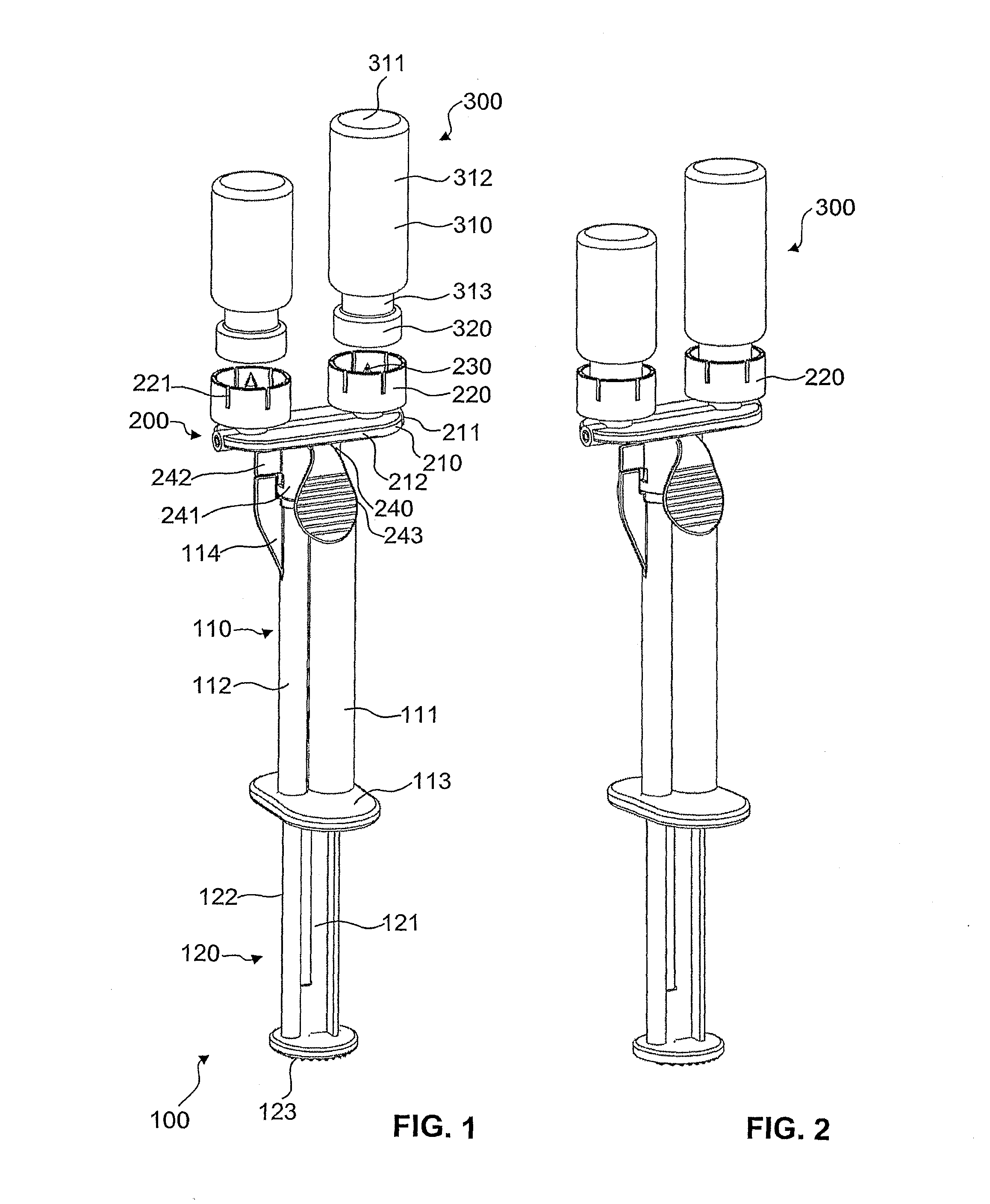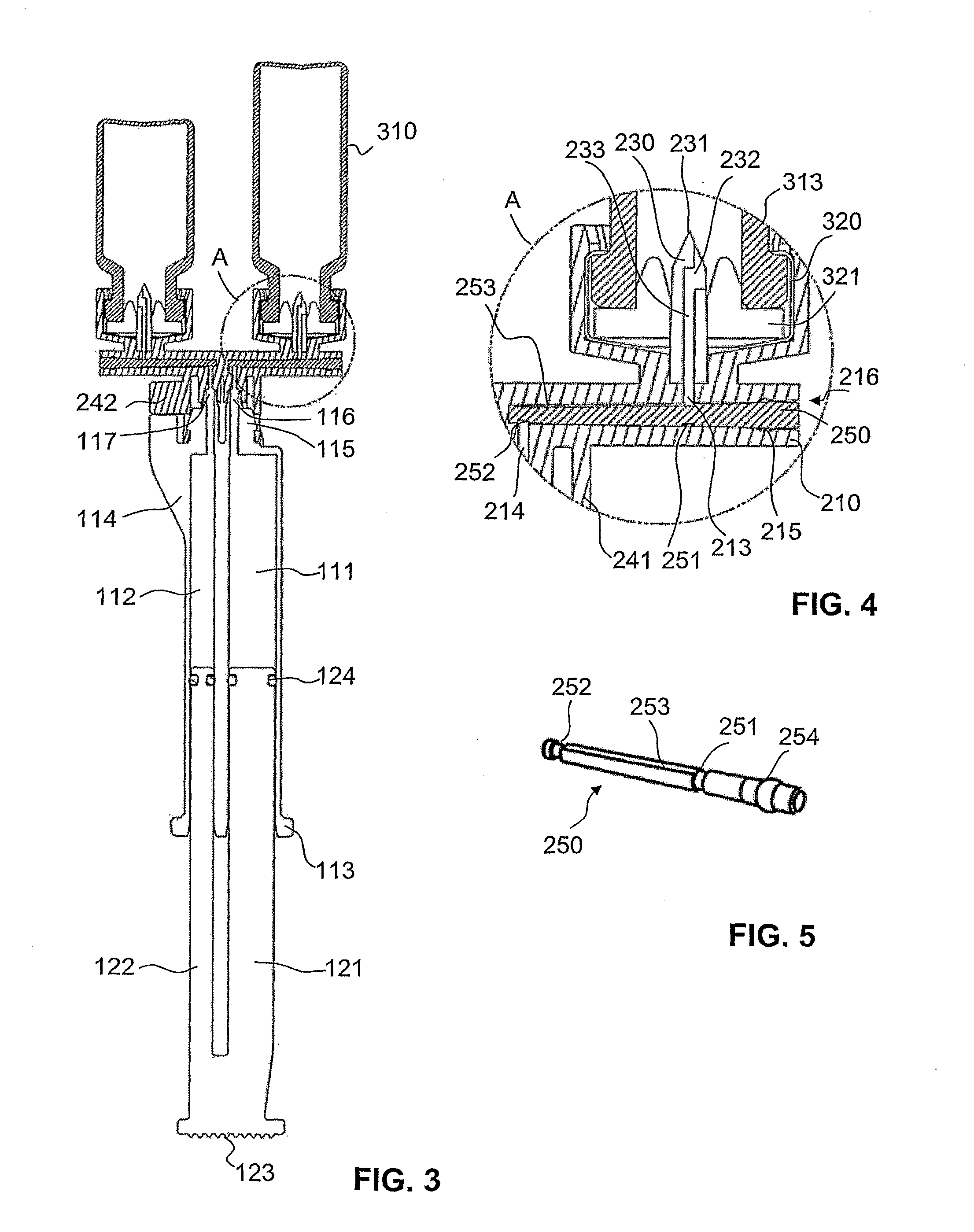Device for removing a fluid from a vial
a technology for removing fluids and vials, which is applied in the field of devices for removing fluids, can solve the problems of chemically modified contents, gas, oxygen from the air, and leaking through seals, etc., and achieves the effects of unintentional spillage of fluids, incorrect manipulation, and gas leaking through seals
- Summary
- Abstract
- Description
- Claims
- Application Information
AI Technical Summary
Benefits of technology
Problems solved by technology
Method used
Image
Examples
first embodiment
[0052]In FIGS. 6 and 8 a device in accordance with the invention is shown, which is designed to remove a fluid from at least one container sealed with a closure that can be punctured. This embodiment in accordance with the invention differs from the filling device in FIGS. 1 to 5 through the design of the container holders. More particularly, the manner in which the vials are held in the container holder is different.
[0053]The container holders 260 are here chimney-like, cylindrical structures which are of sufficient length to hold the entire container in terms of length. Whereas the container holders shown FIGS. 1 to 4 were produced in one piece with the basic body 210, the container holders 260 of the embodiment in FIGS. 6 to 8 are produced separately from the basic body 210 and connected to it by way of a suitable connection, e.g. a welded connection.
[0054]In the embodiment in FIGS. 6 to 8 each inlet opening 213 in the basic body has a larger diameter than in the filling device i...
second embodiment
[0058]In FIGS. 9 to 11b a filling device 270 in accordance with the invention is illustrated. In this embodiment the filling device 270 has a basic body 271 with only one container holder 272 and serves to fill an applicator 280 with a fluid from a container 300. Here the applicator 280 is in the form of a single syringe which has an applicator body 281 with a reservoir 282 and plunger 283 which can be moved therein.
[0059]The container holder 272 into which here a container 300 in the form of a vial can be inserted, has a circular base 276 from which over an angle range of approximately 270° a jacket wall extends upwards. The jacket wall 273 is partially cylindrical in the section facing the base 276 and thereby defines a longitudinal axis of the filling device 270. In an end area arranged at a distance from the base 276 the jacket wall 273 is however circumferentially designed, i.e. cylindrically. The jacket wall 273 thus has an essentially rectangular window opening which is defin...
PUM
 Login to View More
Login to View More Abstract
Description
Claims
Application Information
 Login to View More
Login to View More - R&D
- Intellectual Property
- Life Sciences
- Materials
- Tech Scout
- Unparalleled Data Quality
- Higher Quality Content
- 60% Fewer Hallucinations
Browse by: Latest US Patents, China's latest patents, Technical Efficacy Thesaurus, Application Domain, Technology Topic, Popular Technical Reports.
© 2025 PatSnap. All rights reserved.Legal|Privacy policy|Modern Slavery Act Transparency Statement|Sitemap|About US| Contact US: help@patsnap.com



